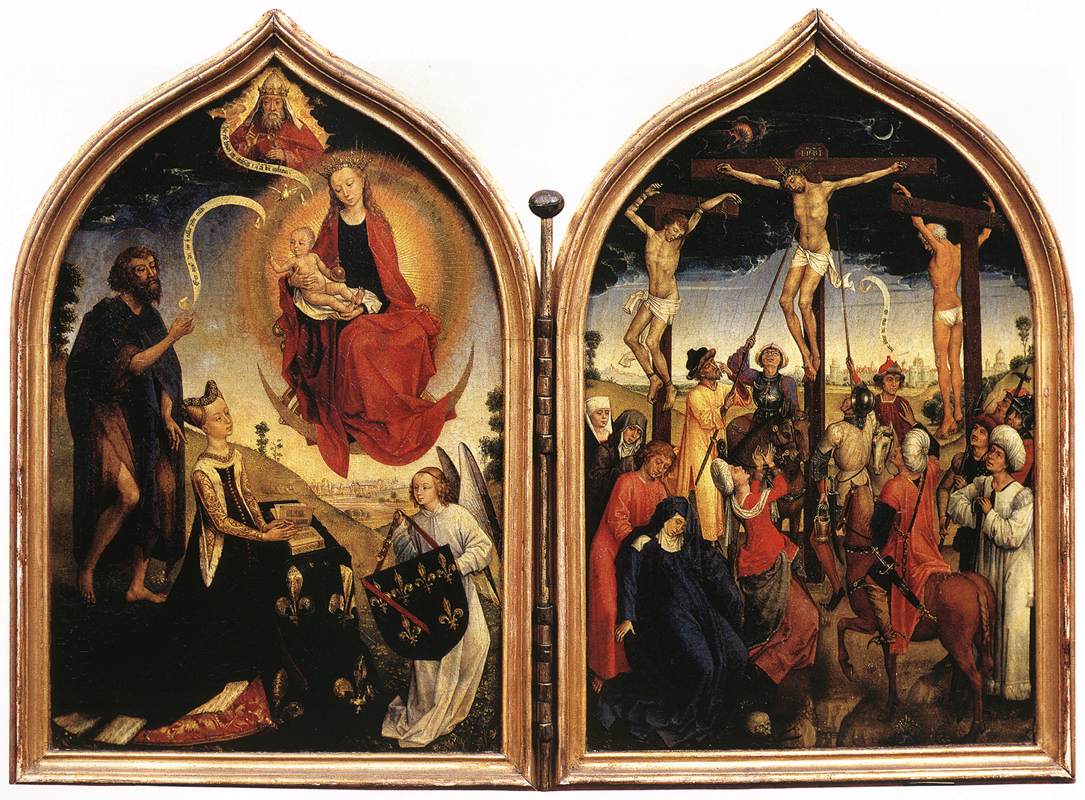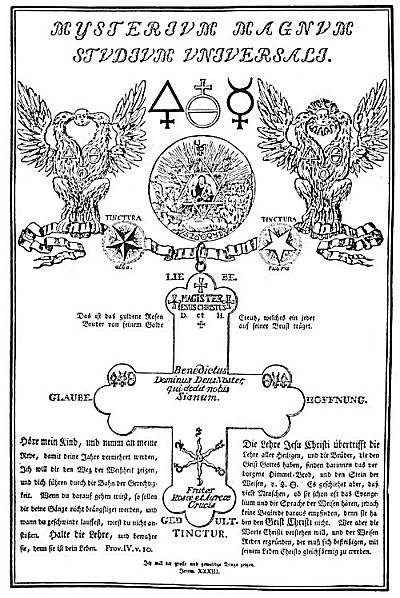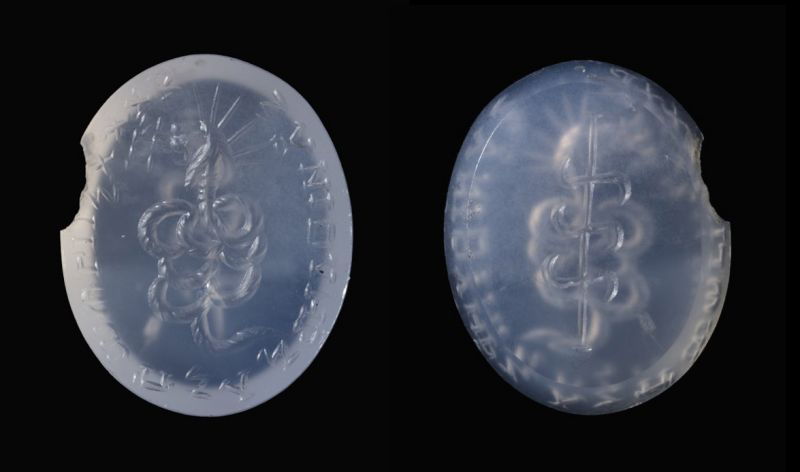p. 181
ONE of the most interesting legends concerning the cross is that preserved in Aurea Legenda, by Jacobus de Vorgaine. The Story is to the effect that Adam, feeling the end of his life was near, entreated his son Seth to make a pilgrimage to the Garden of Eden and secure from the angel on guard at the entrance the Oil of Mercy which God had promised mankind. Seth did not know the way; but his father told him it was in an eastward direction, and the path would be easy to follow, for when Adam and Eve were banished from the Garden of the Lord, upon the path which their feet had trod the grass had never grown.
Seth, following the directions of his father, discovered the Garden of Eden without difficulty. The angel who guarded the gate permitted him to enter, and in the midst of the garden Seth beheld a great tree, the branches of which reached up to heaven. The tree was in the form of a cross, and stood on the brink of a precipice which led downward into the depths of hell. Among the roots of the tree he saw the body of his brother Cain, held prisoner by the entwining limbs. The angel refused to give Seth the Oil of Mercy, but presented him instead with three seeds from the Tree of Life (some say the Tree of Knowledge). With these Seth returned to his father, who was so overjoyed that he did not desire to live longer. Three days later he died, and the three seeds were buried in his mouth, as the angel had instructed. The seeds became a sapling with three trunks in one, which absorbed into itself the blood of Adam, so that the life of Adam was in the tree. Noah dug up this tree by the roots and took it with him into the Ark. After the waters subsided, he buried the skull of Adam under Mount Calvary, and planted the tree on the summit of Mount Lebanon.
Moses beheld a visionary being in the midst of this tree (the burning bush) and from it cut the magical rod with which he was able to bring water out of a stone. But because he failed to call upon the Lord the second time he struck the rock, he was not permitted to carry the sacred staff into the Promised Land; so he planted it in the hills of Moab. After much searching, King David discovered the tree; and his son, Solomon, tried to use it for a pillar in his Temple, but his carpenters could not cut it so that it would fit; it was always either too long or too short. At last, disgusted, they cast it aside and used it for a bridge to connect Jerusalem with the surrounding hills. When the Queen of Sheba came to visit King Solomon she was expected to walk across this bridge. Instead, when she beheld the tree, she refused to put her foot upon it, but, after kneeling and praying, removed her sandals and forded the stream. This so impressed King Solomon that he ordered the log to be overlaid with golden places and placed above the door of his Temple. There it remained until his covetous grandson stole the gold, and buried the tree so that the crime would not be discovered.
From the ground where the tree was buried there immediately bubbled forth a spring of water, which became known as Bethesda. To it the sick from all Syria came to be healed. The angel of the pool became the guardian of the tree, and it remained undisturbed for many years. Eventually the log floated to the surface and was used as a bridge again, this time between Calvary and Jerusalem; and over it Jesus passed to be crucified. There was no wood on Calvary; so the tree was cut into two parts to serve as the cross upon which the Son of Man was crucified. The cross was set up at the very spot where the skull of Adam had been buried. Later, when the cross was discovered by the Empress Helena, the wood was found to be of four different varieties contained in one tree (representing the elements), and thereafter the cross continued to heal all the sick who were permitted to touch it.

Moe is the founder of GnosticWarrior.com. He is a father, husband, author, martial arts black belt, and an expert in Gnosticism, the occult, and esotericism.



![How, among innumerable other miracles of healing wrought by the wood of the cross, which King Oswald, being ready to engage against the barbarians, erected, a certain man had his injured arm healed [634 A.D.] | Book 3 | Chapter 2 How, among innumerable other miracles of healing wrought by the wood of the cross, which King Oswald, being ready to engage against the barbarians, erected, a certain man had his injured arm healed [634 A.D.] | Book 3 | Chapter 2](https://www.gnosticwarrior.com/wp-content/plugins/contextual-related-posts/default.png)
